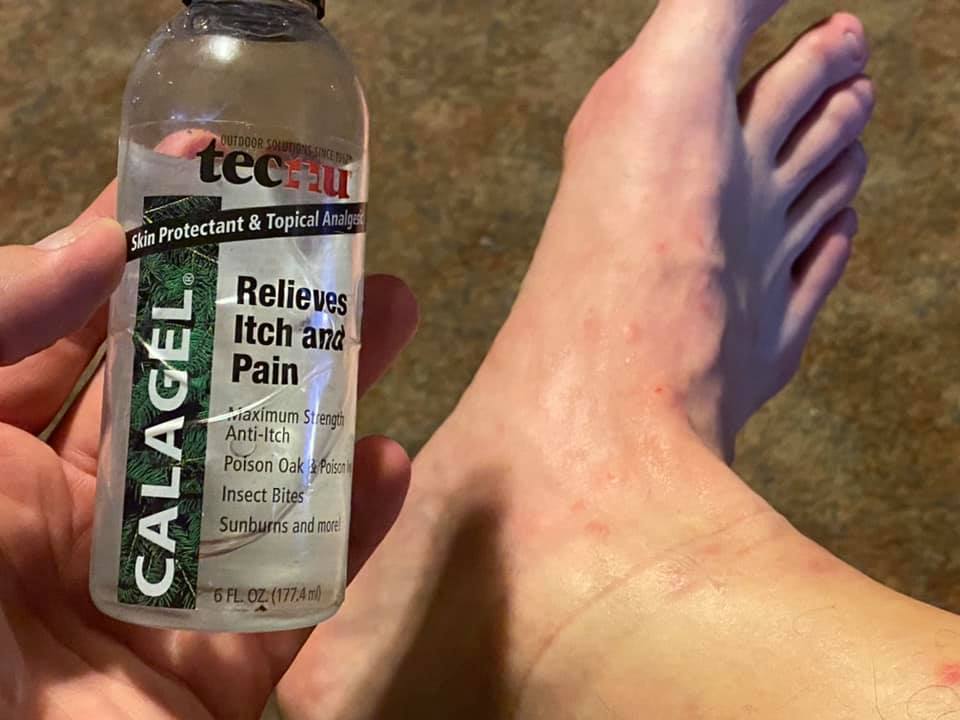The Ten Hiking Essentials for Every Hiker
Are you using the ten hiking essentials every time you go for a hike?
If you’re not, you should be. These essentials are there to ensure that you have a safe and enjoyable hiking experience. A lot of things can happen on even a simple day hike. Having these essentials with you will help you be prepared for just about anything.
But not carrying the ten hiking essentials might result in even more problems when you’re faced with an incident. More problems could mean more injuries, more costs, or worse.
Luckily for you, knowing what the ten hiking essentials are and getting them is practically easy for nearly every hiker out there, and in this post, I’ll show you what you need to know and get to have all the essentials you need for a great hike.
The Ten Hiking Essentials
The following ten hiking essentials should be carried by every hiker on the trail. These essentials are even needed for simple day hikes. You never know what could happen. It’s better to be prepared than to not be prepared at all.
Essential 1 – Trail Navigation
Trail Navigation is an essential for hiking.
You need to be able to know where you’re going the whole time you’re out in the forest, right?
You should have multiple forms of trail navigation. That way, if one of them fails, you have another to fall back to.
Take a dedicated GPS or an app on your phone, extra batteries/charging brick/cord, a compass, and a map as your hiking navigation equipment.
Essential 2 – Lights
It’s important to see when it gets dark outside.
You might just plan on being out in the day but anything can happen and keep you out past the daylight hours.
If you don’t have a light with you, hiking can become really scary, especially if you get turned around or lost.
Carry a few different light sources with you. Carry a flashlight and a headlamp. Make sure you pack extra batteries for each, just in case you need them.
Essential 3 – Skin Protection
Protecting your skin is very important when on the hiking trail.
This is one of the ten hiking essentials that most hikers overlook. And it’s no fun when you need protection, and you don’t have it.
Protecting your skin from the harmful sun and biting insects is the target here.
Carry sunblock lotion, lip balm, and bug spray. You might also carry a face mask just in case you ever need it again (hopefully not). You also want to carry a can of bear spray when in bear country.
Essential 4 – First Aid
Every hiker should be adding a first aid kit to their ten hiking essentials list.
You don’t need to pack a full-blown trauma kit when you go hiking.
But you should at least have the basics with you, just in case.
The best way to do it is to make your own. Carry only the supplies you know you would likely need. Only carry what you know how to use, too.
Essential 5 – Tools
Every hiker needs a good set of tools and repair gear.
Bring a knife with you. Consider a folding saw to cut small branches in case you need to make a fire.
Bring a basic repair kit for your gear. This might include duct tape and a sewing kit.
Some paracords are also a great idea for survival sheltering, just in case you need it.
Essential 6 – Fire Kit
If you get out past dark and it’s cold, you might need to make a fire to stay warm.
A fire will also help keep you safe from wildlife that could be harmful to you.
Bring stuff to make a fire, like waterproof matches, a fire-starting rod, and even a backup lighter.
Bring some fuel with you, too, such as cotton balls dipped in wax.
Essential 7 – Shelter
Just in case you need an emergency shelter, you should have it ready.
You don’t have to pack a heavy tent and sleeping bag with you on a day hike.
But you need something just in case. You want to stay dry. You want to stay warm.
A simple oversized rain poncho can be a great shelter when utilized with a paracord and some sticks. A shock blanket can be great to keep you warm when you have nothing else. Both of these are so lightweight you’ll never know they’re there.
Essential 8 – Extra Food
Take extra food with you just in case you need it.
You should bring enough food to ration out for up to 72 hours as a rule of thumb.
Just make sure you bring the right food with you. Nothing that requires a certain temperature or cooking.
Bring some high-calorie loaded trail bars, nuts, oatmeal, gels, chews, and stuff like that. Even cheese and crackers make for a great emergency meal. Carry a bear box when hiking in Bear Country to store your food.
Essential 9 – Extra Water
Water is one of the most important ten hiking essentials to take.
You can survive without food for a while. You can’t survive without water for too long.
Dehydration can kill you. Bring enough water to last you for a while. It should be your heaviest item.
You should also pack a water filter, but make sure you know how to use it and have tested it before you throw it in your pack.
Essential 10 – Extra Layers
The final item of the ten hiking essentials is extra layers.
In the event that you fall into cold water, you’ll need a change of clothes, or if it gets colder and you need more layers.
Bringing a full outfit will add a lot of extra weight you don’t need.
I suggest insulated running tights, an insulated running shirt, extra socks, a running win breaker, gloves, and a beanie. This kit is lightweight and designed to keep runners warm just by wearing the items alone and as is.
Bonus Essential 11 – Emergency Communication
As a bonus essential, I wanted to throw in emergency communication.
If you get injured or lost while hiking, you’ll need to get help quickly.
But you might be alone and unable to mobilize yourself.
There are forms of emergency communication devices known as PLBs. Personal Locator Beacons can be activated to send emergency communication information without a cell phone signal. Instead, it uses satellite and GPS technology. It’s a great resource and can save lives. Consider it especially for more rugged trails. And carry a whistle with you for alerting others of your presence.
Ten Hiking Essentials Final Thoughts
And that sums up the ten hiking essentials list. So, whether you’re day hiking in the Shawnee National Forest or backpacking in the Smokey Mountains, make sure you carry all the essential hiking gear listed above to have a safe and enjoyable hike.
Please share this article with others who might be interested in the topic. Be sure to subscribe to my free monthly newsletter for more hiking tips and resources.
Support me with a one-time donation or monthly if you have enjoyed this free article. I appreciate your support. And until next time, I’ll see you on the trail!
Please Support Hiking with Shawn
Alrighty folks, I hope you have enjoyed this content. I provide it for free and it takes a while to create. If you would be so kind enough to support my efforts, you can do so by sharing this post with others, especially on social media. Be sure to subscribe to my YouTube Channel to see my latest videos, shorts and live streams. Follow me on Facebook, Instagram, Twitter and TikTok for unique content that you will only find on those pages. You might also join my Southern Illinois Hiking & Outdoor Resources Group on Facebook, too!
You can also support me by becoming a Patreon Supporter for as little as $3/month and you can cancel anytime (no contracts or catches). Patreons get access to extra features, exclusive articles, sticker packs, gifts and more. Consider buying official Hiking with Shawn Merchandise as another way to support me. I spend a lot of money on Hiking with Shawn and because of extremely high public land permit fees, I make very little money in return so everything helps.
Thanks again for checking out another one of my articles and until next time, I’ll see you on the trail!

Shawn Gossman
Founder, Hiking with Shawn
Howdy folks! My name is Shawn Gossman and I founded Hiking with Shawn. I’m an avid hiker, cyclist and outdoorsman here in the Shawnee National Forest. I was born and raised in Southern Illinois and never want to leave. Click here to learn more about Shawn Gossman




